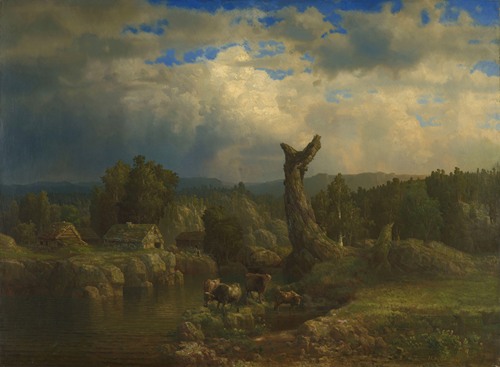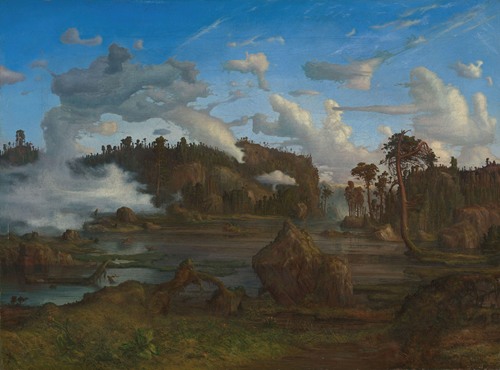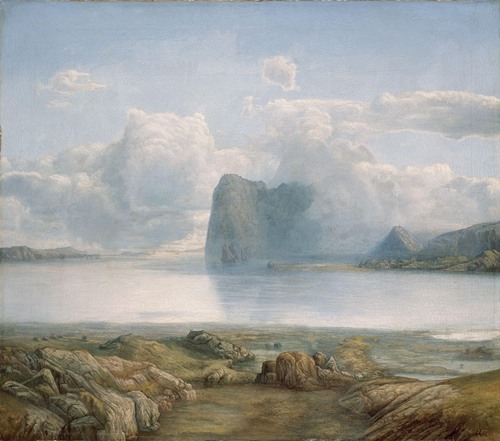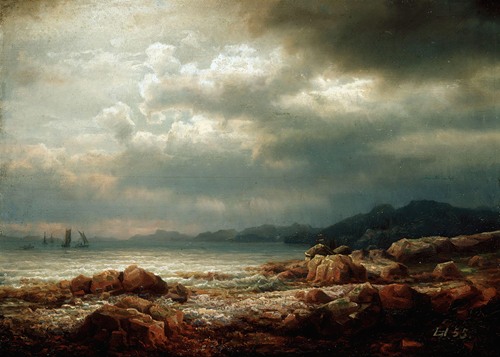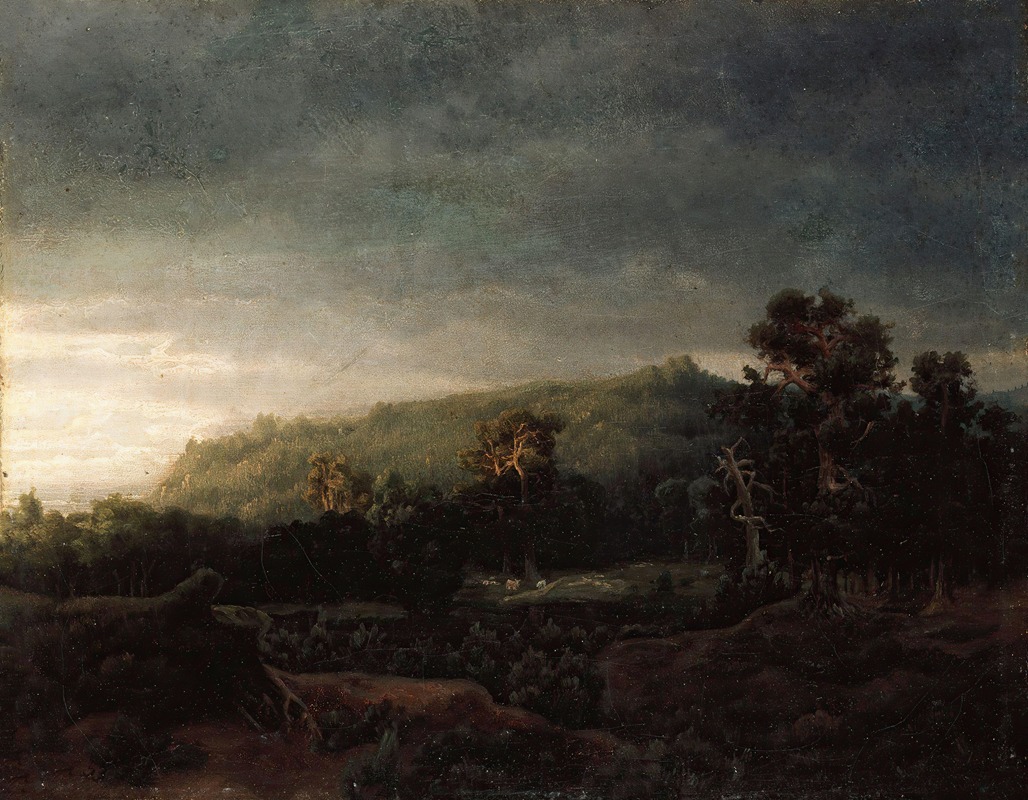
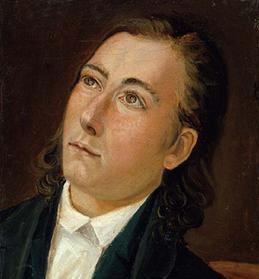
Lars Hertervig was a Norwegian painter. His semi-fantastical work with motives from the coastal landscape in the traditional district of Ryfylke is regarded as one of the peaks of Norwegian painting.
Lars Hertervig was born in 1830 at Borgøy, in the municipality Tysvær in Norway, on the west coast of Norway, north of Stavanger. His family were poor, Quaker farmers. Hertervig studied painting at the Arts Academy of Düsseldorf from 1852, as the private pupil of Hans Gude. He is associated with the Düsseldorf school of painting.
In 1854, he experienced a temporary mental breakdown, and moved back to the Stavanger area. In October 1856, Hertervig entered Gaustad asylum.
His last 30 years he struggled financially, and finally ended up at the poorhouse. He could not afford to paint with oil on canvas, and several works from this period are watercolors and gouache on paper not meant for painting, sometimes using bits of papers glued together with homemade rye flour paste.
His artistic breakthrough was posthumous, coming at the 1914 Jubilee Exhibition in Kristiania (now Oslo), twelve years after his death in Stavanger.
